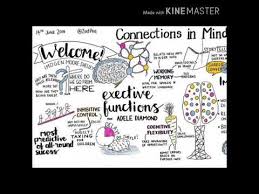Considering the billions of life forms present on planet Earth, there are several reasons why eusocial species, notably humans, have progressed to be a dominant force. Big brained, eminently social, collaborative in nature, able to communicate complex thoughts—these are just some explanations undergirding our achievement. From a cognitive science perspective, one significant outcome of these various factors, and a big reason for our success, is cognitive flexibility. At its most essential, this refers to the ability to control the how, when, where, and why of thought. The human brain allows control, either automatically or deliberately, of what we think, how we think about it, when we think it, and why we are thinking of it. In an ever-changing world where circumstances vary dynamically from moment to moment, a thought-generating process that can adapt and respond equally fast is a decided advantage.
This type of mental flexibility incorporates the rapid analysis of circumstances, assessing of multiple channels of information, determining alternative solutions, eliminating those that do not work, recognizing errors, etc. More than anything, cognitive flexibility requires the “ability to resist the impulse to persevere and keep thinking in a previously active but no longer appropriate way.” Most times this requires the ability to assess the larger context in which such actions are pertinent. Hundreds of years of neuroscience research have shown that our frontal lobes are the cortical regions critically necessary for this amazing flexibility.
What brought clarity to the role frontal lobes play in higher cognitive functions was the famous case of Phineas Gage. On September 13, 1848, the 25-year-old Gage was preparing a railroad bed using an iron tamping rod to pack explosive powder into a hole. He hit the powder to pack it in but the powder detonated, sending the long rod hurtling upward. The rod peneestrated Gage’s left cheek, tore through his brain, and exited his skull. Amazingly, Gage not only survived the horrific accident but could speak. He walked to a nearby cart, following the disaster so they could take him to a doctor. The injury destroyed an extensive part of Gage’s left frontal lobe. Or what we now consider the central executive region. In doing so, the injury changed Gage’s personality completely.
The chief functions performed by the frontal lobe include intellectual skills responsible for the planning, initiation, sequencing, monitoring, and overall cognitive control of complex goal-directed behavior. Friends of Gage did not recognize him following the accident, for he could no longer perform these skills. Professor of neuroscience Patricia Goldman-Rakic (1937-2003) advocated for the role of a special part of the frontal lobes called the prefrontal cortex (PFC) in the building blocks necessary for abstract understanding. Abstraction is the unique human ability to uncouple thinking from environmental stimuli – the basis for symbolic deliberation. She showed that impairments in a subdivision of the PFC, the dorsolateral part or DLPFC, contributes to thought disorders, such as those observed in schizophrenia.
Goldman-Rakic’s work, along with others, further showed that the frontal lobes are an important site for inhibitory control. It appears that executive control operates, at one level, in a top-down manner, with the PFC having a leading, controlling role over many lower-level structures. This control over other brain regions is exercised through response inhibition which involves circuits that use chemicals such as gamma aminobutyric acid (GABA), an inhibitory neurotransmitter.
Another remarkable discovery by Goldman-Rakic and others was that the brain matures in an organized way, starting in the back and moving to the front. And these maturational changes do not stop with puberty. It means that the frontal lobes, home to key executive functions like planning, working memory, and impulse control, are among the last areas to mature in the brain. Full maturity of these circuits extends well into the late 20s or 30s. Thus, for the first two to three decades of development, the human mind is in a state of reduced efficiency. During this time, cognitive control is susceptible to impulsiveness (or lack of inhibition) and reduced flexibility. The personality has a high likelihood of developing antisocial tendencies, delinquency, spoiled mind syndrome and other early criminal conduct. What all this suggests is the undeniable importance of flexibility in thinking, as orchestrated by frontal lobe circuits, and how critical it is for our survival.

